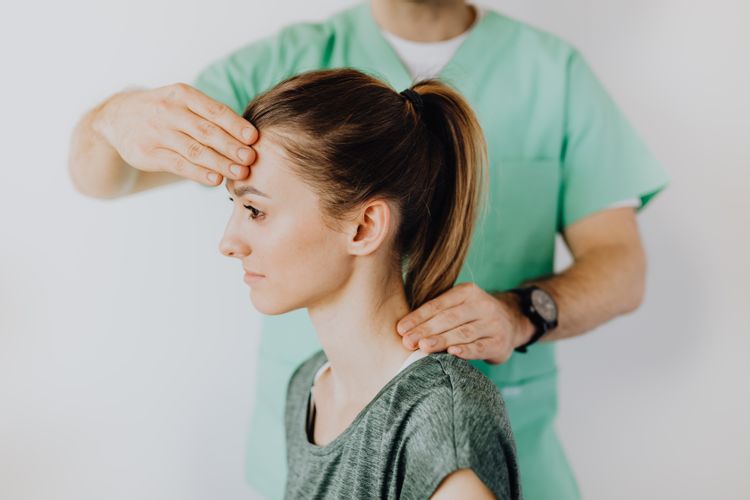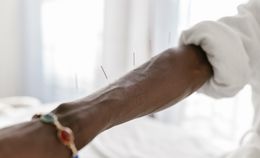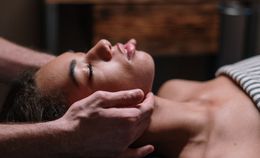Anxiety can interfere with living the life that you want. From everyday events, to work, friends and family - anxiety can be overpowering. There are holistic treatments which can help manage and help alleviate the severity of anxiety symptoms. Craniosacral Therapy is one such therapy.
In this article, we will explore how Craniosacral Therapy can be beneficial for anxiety, its effectiveness, the number of sessions that are recommended, and what it might cost.
Craniosacral Therapy for Anxiety
Craniosacral Therapy provides a holistic approach combining mind-body practices. It is is a combination of massage, tissue adjustments, deep breathing, healing touch, and other relaxing techniques. This alternative therapeutic approach provides physical and mental relaxation by involving different bones present in the skull, face, and backbone. According to one study, the gentle, light touch vibrations move the cerebrospinal fluid helping the body and mind work more efficiently and effectively to reduce stress and anxiety.
Wondering how Craniosacral Therapy works for anxiety?
Does Craniosacral Therapy Work for Anxiety?
Yes, Craniosacral Therapy is a successful alternative therapeutic approach for anxiety management.
Patients are usually unable to provide a positive response to stress stimuli when the hyper-activated sympathetic nervous system causes anxiety symptoms including:
Irritability
Sleep disorders
Chronic stress
Stress-related tiredness
Craniosacral Therapy improves the parasympathetic nervous system and counteracts sympathetic hyperactivation. In essence, through the improvement of the parasympathetic nervous system, levels of anxiety may be improved and reduced through Craniosacral Therapy.
Is Craniosacral Therapy an Effective Option for Anxiety?
Craniosacral Therapy is effective in reducing anxiety. Some of the clinical trials which studied the efficacy of Craniosacral Therapy in combating anxiety showed significant symptomatic improvement. The proposed mechanism of Craniosacral Therapy in alleviating anxiety also has scientific significance.
Certain pressure points present in the craniosacral system are gently manipulated through Craniosacral Therapy for tension reduction. The parasympathetic nervous system is activated by focusing on the breathing process during the therapy and provides a relaxing effect.
Alternative therapy experts prefer to conduct Craniosacral Therapy in a calm and comfortable environment. This peaceful ambiance also facilitates a reduction in anxiety symptoms. It has been observed that anxiety is often associated with a painful condition. Craniosacral Therapy is even effective in reducing underlying pain symptoms. Thus, in both regards, the patient experiences long term benefits.
Want to find out how Craniosacral Therapy can be beneficial for pain as well? Read: Craniosacral Therapy for Pain
What Do Research or Case Studies Show?
Medical researchers always try to ascertain evidential support to substantiate any therapeutic approach. Anxiety is often an outcome of hyper-autonomic functioning. Craniosacral Therapy is a manual therapy which modulates the hyper-autonomic condition by activating parasympathetic nervous system activity, and by suppressing the over-excitement of the sympathetic nervous system.
In 2011, Evidence-based Complementary and Alternative Medicine Journal published a placebo-controlled, randomized, clinical trial report to showcase the efficacy of Craniosacral Therapy in alleviating anxiety and other associated symptoms present in fibromyalgia patients.
This research was conducted by Almeria Fibromyalgia Association. A total of 104 patients, ages 16-65 years, were enrolled in this trial. According to the study results, the participants experienced relief from fibromyalgia along with a significant reduction in levels of anxiety.l. This manual treatment significantly improved the quality of life of the affected patients.
Apart from these research findings, other case study reports also showed that Craniosacral Therapy was effective in reducing anxiety symptoms. One case study, reported by Upledger Institute, involved a 39 years old woman who had a history of anxiety, depression and post-traumatic stress disorder, along with Hashimoto's Disease. After completion of her 6 to 12 sessions of Craniosacral Therapy, the patient felt lighter and optimistic. Physical trouble like heaviness in the heart was relieved. The overall quality of life improved.
In essence, Craniosacral Therapy can be very effective in managing and reducing levels of anxiety.
How Many Sessions are Recommended for Anxiety?
The degree of anxiety and the duration of suffering, as well as the underlying cause of anxiety, varies from patient to patient. The CST session is usually customized, depending upon the patient's requirements. CST treatment plans may also vary from practitioner to practitioner.
A patient may experience positive changes after one session .However, in most cases, 3 - 10 sessions are often recommended.
Clinical researches reported that after a session of 25-weeks of treatment in a six month duration, the patient can experience a considerable reduction in anxiety associated with fibromyalgia or certain pain conditions. The benefits of this treatment in reducing anxiety, alleviating pain, and improving sleep and overall quality of life is significant.
The duration of each session also varies from patient to patient depending upon each individual's response. Most often though, the length of a session is an hour long.
What Will Craniosacral Therapy for Anxiety Cost?
The average price per session in the United States is $70-$170. This is taking into account most major cities throughout the nation.
If you find that the average three-to-ten sessions end up serving your needs for managing your levels of pain, you can expect to pay $700 on the low end, and $1,700 on the high end. Don't forget to ask your practitioner about any discounts or specials they may be offering.
For more information, read: How Much Does Craniosacral Therapy Cost?
References :
Haller, H., Lauche, R., Cramer, H., Rampp, T., Saha, F.J., Ostermann, T., Dobos, G. (2016). Craniosacral Therapy for the Treatment of Chronic Neck Pain: A Randomized Sham-controlled Trial. The Clinical Journal of Pain, Retrieved April 18, 2019, from https://journals.lww.com/clinicalpain/FullText/2016/05000/Craniosacral_Therapy_for_the_Treatment_of_Chronic.10.aspx
Guillermo A. Mataran-Penarrocha, Adelaida Maria Castro-Sanchez, Gloria Carballo Garcia, Carmen Moreno-Lorenzo, Tesifon Parron Carreno, Maria Dolores Onieva Zafra (2011). Influence of Craniosacral Therapy on Anxiety, Depression and Quality of Life in Patients with Fibromyalgia. Evidence-Based Complementary and Alternative Medicine, 2011 (178769), 1-9. doi:10.1093/ecam/nep125. Retrieved April 18, 2019, from https://www.ncbi.nlm.nih.gov/pmc/articles/PMC3135864/
Haymore, J., CranioSacral Therapy - PTSD/Anxiety/Depression. Upledger Institute Case Study retrieved April 18, 2019, from https://www.iahe.com/docs/articles/craniosacral-therapy-----ptsd-anxiety-depression.pdf
IGNERI, J., (2018). How Craniosacral Therapy Helped Me Deal With Anxiety. The lightest touch can make the biggest difference. Retrieved April 18, 2019, from https://www.iahe.com/docs/articles/How_Craniosacral_Therapy_Helped_Me_Deal_With_Anxiety_1.pdf





















